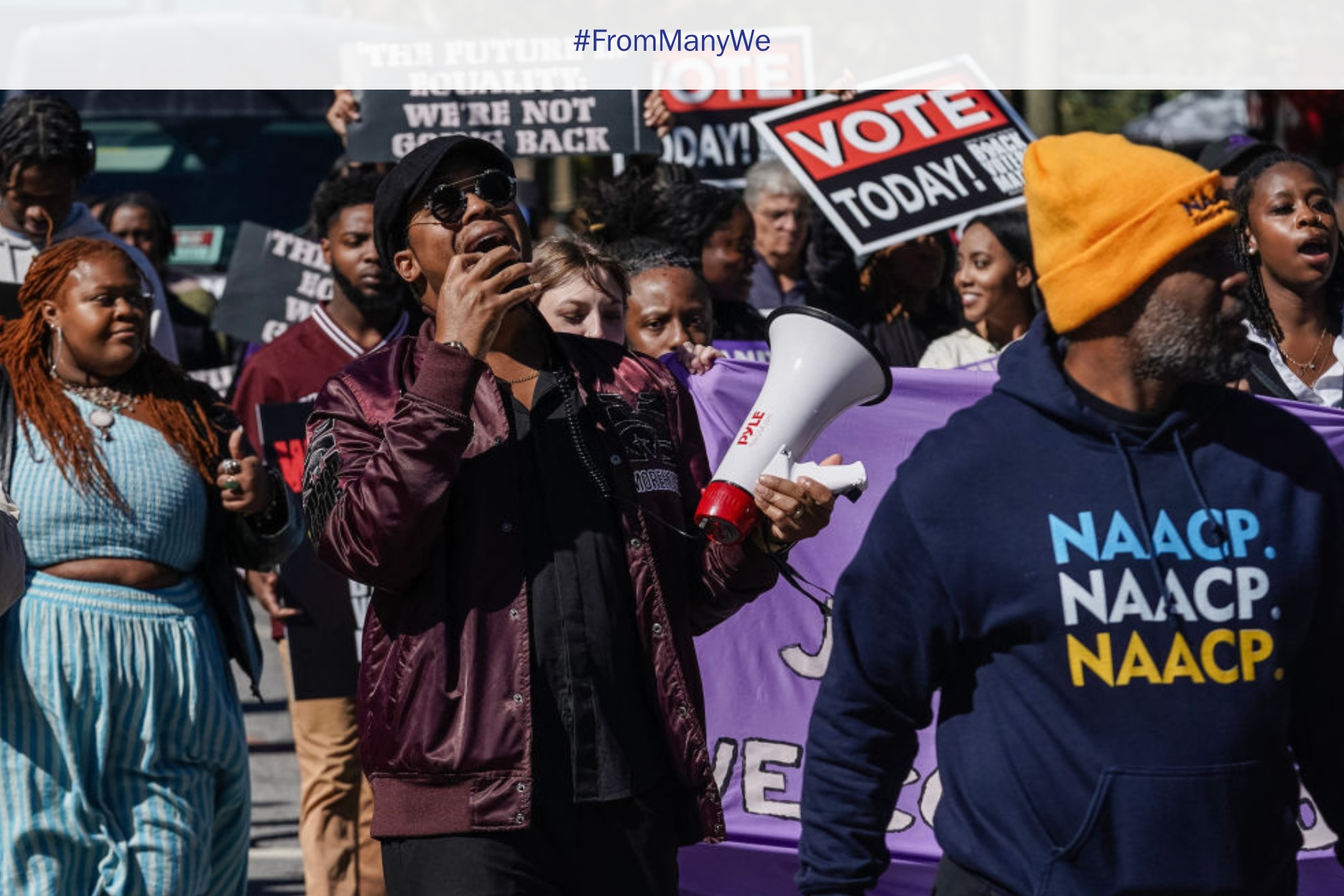Honoring Brown v. Board of Education: A National Opportunity to Confront Today’s Challenges

On the 70th anniversary of the 1954 Brown v. Board of Education decision, many of us are considering the decision’s success. Brown promised school desegregation, and for about three-and-a-half decades after the 1954 ruling, school segregation was indeed significantly lessened. Today, however, reversals in some of the gains from Brown, together with massive reductions in the Black educator workforce and a host of systemic factors that limit students’ opportunities to learn, force us to ask questions about whether schools are appropriately serving all of their students and what the implications are for our society if things continue as they are.
Impacts on Educator Workforce Diversity
The decline in segregation after Brown came at the expense of Black schools, which were shut down en masse. In the decade following the decision, more than 38,000 Black teachers were fired. This number is nearly half of the 82,000 Black teachers who were employed in 1954. Nearly 90 percent of Black principals lost their jobs (or were demoted) as well.
The Black educator workforce never recovered. Many schools with high rates of Black students were no longer able to be responsive to students’ needs. Leading scholars such as Vanessa Siddle Walker have written about the ways in which all-Black segregated schools, despite their inherently unequal nature during the era of forced segregation, provided support and cultural responsiveness for Black students. The students attending these all-Black schools were taught by Black teachers in schools that were led by Black principals. Before the mass firings of Black teachers and principals in the wake of Brown, a majority of southern Black students’ teachers were Black, as had been the case since 1869.
Today, Black teachers make up just 6.1 percent of the teacher workforce throughout the US. Even in schools with at least 90 percent students of color, only about 17 percent of teachers are Black, and around 45 percent of teachers in those schools are White.
These data and many other findings will appear in the forthcoming Southern Education Foundation report, Miles To Go: The State of Black Education in America.
The Challenge of Resegregation
Unfortunately, the damage to the Black educator workforce has far outlasted the biggest desegregation gains following Brown. In 1968, 14 years after Brown, 77 percent of Black students attended public schools with a majority enrollment of students of color. In 1970, the Swann v. Charlotte-Mecklenburg Board of Education decision increased federal district courts’ power to remedy racial segregation, including through busing. Black students attending public school with students of color as the majority fell to 62 percent by 1976 and remained about the same through the 1980s.
Beginning in the 1990s, racial segregation in schools began to rise sharply. The 1991 US Supreme Court’s Board of Education of Oklahoma City Public Schools v. Dowell decision increased the federal courts’ power to declare that a school district had sufficiently desegregated and could therefore remove desegregation orders. With increasingly successful attempts to push back on desegregation, the rate of Black students attending schools in which the majority were students of color rose to 73 percent by 2005. By 2018, this rate reached 81 percent, which was higher than in 1968.
Still Separate, Still Unequal: Education and Systemic Opportunity Gaps
Segregation does not only harm Black students. Research shows that all students learn and perform better when they attend schools with a diverse student enrollment and have a diverse set of teachers. And the impact is not confined to the classroom. Outside of direct educational gains or losses, we know that a host of systemic factors can be affected by schooling, and learning is then affected by those same factors: neighborhood resources, health and wellness, the physical environment, and workforce needs, to name a few. The Southern Education Foundation has adapted the work of other scholars and institutions to develop the Social Determinants of Education Framework that reflects this relationship. (Read more in this report.)

Perhaps most importantly, we know that schools and systemic factors often interact in ways that limit opportunities for Black students and other students of color.
- Students’ opportunities to learn are limited when their teachers hold lower expectations for them than for other students and when they are disciplined at higher rates than other students for the same behaviors.
- Students’ opportunities are limited when a lack of neighborhood resources prevents students from fully engaging in their education.
- Students’ opportunities are limited when they do not see themselves or their cultural knowledge reflected in the curriculum of their schools. These students may also experience microaggressions from classmates and teachers.
- Students’ opportunities are limited when environmental and nutritional injustices harm their physical and mental well-being outside and inside of schools. Other factors like the over-policing of neighborhoods of color and inequities in the justice system can remove adults and children from their communities entirely, which destabilizes school access and community knowledge and resources.
We know these disparities exist, that they are happening and that they disproportionately harm students of color. We also know that school segregation was intentional and, in many ways, remains intentional. Many of these systemic factors that impact students’ education were also created intentionally and must be addressed intentionally.
These limits to opportunity, or opportunity gaps, do not mean a student’s fate is sealed. Many students still succeed brilliantly, despite the harm that inequities in schools and systems can cause. However, each time a student is denied fair opportunities to learn, to succeed, and to seek the education and life pathways that best match their skills and knowledge, we are all harmed. Increasing school segregation, which we know is associated with a host of other negative factors, only exacerbates challenges around resourcing and opportunity.
The large-scale failure of schools to provide all students with equitable opportunities, which scholars such as Gloria Ladson-Billings call an education debt, limits our collective knowledge and skills and hampers our ability to create a truly inclusive democracy. Segregation and systemic issues are both causes of the challenges we see in schools today, and working to thoughtfully address either can have enormous positive impacts for all of us. Right now, however, we are addressing neither. By some measure, both are getting worse.
A National Opportunity
Segregation, the destruction of the Black educator workforce, and the systemic issues that affect schooling present an enormous challenge, but they also provide us with a national opportunity. If schools do better serve the needs of all their students, we will all benefit. If systems do become more equitable, there is enormous potential ahead.
What can each of us do? Whether or not you sit in a leadership role, you can make this a focus. You can learn more about the many issues that impact students’ education. You can make sure others are aware by making these issues part of our national conversation. These are systemic issues that cannot be solved with the flip of a switch or the changing of a line of policy, but the serious potential harm to our communities and the nation if we fail to address them are too great for us to avoid any longer. Improving opportunities for every student, especially those still feeling the impact of segregation, should be at the center of our work in education and beyond.
The Kettering Foundation is celebrating the anniversary of Brown:
LISTEN to The Context Podcast: Matthew Delmont: Brown v. Board—What It Achieved and Where it Fell Short
WATCH Education and Democracy: A Conversation with Dr. Johnnetta Betsch Cole
WATCH Kelley Robinson: Stand Up for the Promise of Brown v. Board of Education
READ in From Many, We Blog Series: Grading Desegregation: Dayton Gets an Incomplete
READ in From Many, We Blog Series: 70 Years After Brown: A Reflection on Democracy and Education
Max Altman, PhD, is the Director of Research and Policy at the Southern Education Foundation, a research, policy, advocacy and leadership development organization that works to advance education opportunity for underserved students. He is also a former teacher.
From Many, We is a Charles F. Kettering Foundation blog series that highlights the insights of thought leaders dedicated to the idea of inclusive democracy. Queries may be directed to fmw@kettering.org.
The views and opinions expressed by contributors to our digital communications are made independent of their affiliation with the Charles F. Kettering Foundation and without the foundation’s warranty of accuracy, authenticity, or completeness. Such statements do not reflect the views and opinions of the foundation which hereby disclaims liability to any party for direct, indirect, implied, punitive, special, incidental, or other consequential damages that may arise in connection with statements made by a contributor during their association with the foundation or independently.








